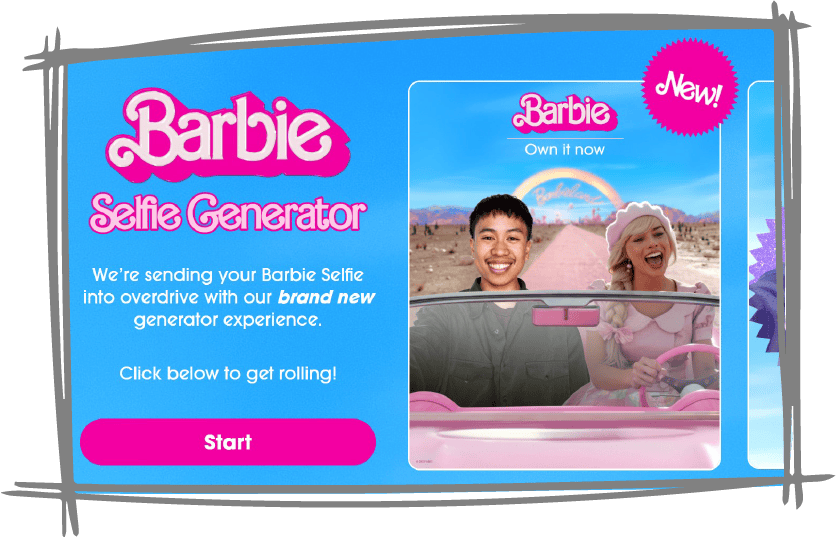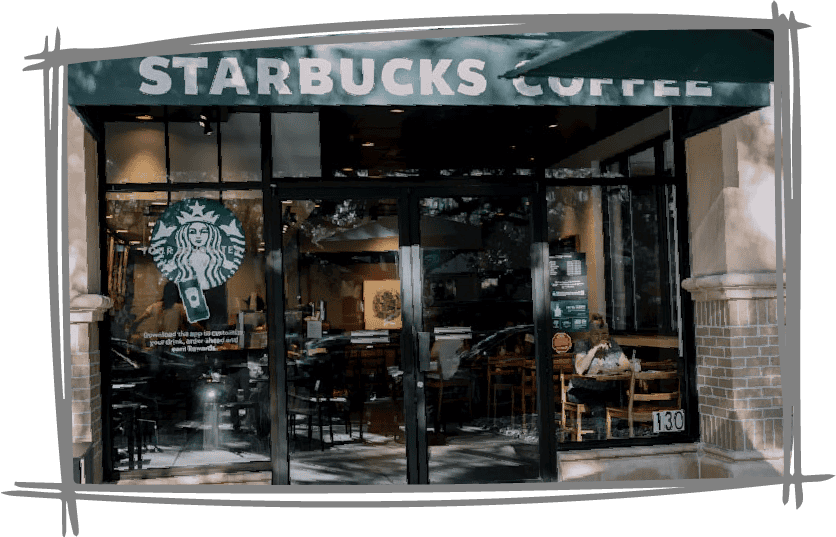Table of Content
- What is Brand Consistency?
- Key Elements of Brand Consistency
- Benefits of Brand Consistency
- Examples of Brand Consistency
- Conclusion
You will be surprised to know that an average person, including you and me, sees about 10,000 ads daily! With such overwhelming information, how can your brand rise above the noise and achieve lasting recognition in crowded media spaces?
Brand consistency is the key. It improves your visibility in a saturated market, fosters strong customer relationships, boosts loyalty, and ultimately drives sales. In fact, consistent brand messaging can increase revenue by 10-20%.
We will explore everything about brand consistency.
What is Brand Consistency?
Brand consistency involves creating and maintaining a cohesive brand identity and message across every platform and interaction. It’s about creating a seamless experience that ensures your audience instantly recognizes your brand and understands what makes it unique.
Think of brand consistency as the thread that weaves your company’s identity into a cohesive whole. From your website to social media to your physical spaces, every touchpoint should harmonize to reflect your brand’s personality and values.
Brand consistency is not just about using the same colours, fonts, and logos; it’s about aligning your tone of voice, messaging, and visual identity to deliver a trustworthy, familiar experience. Whether it’s a sleek brochure or a witty social media post, brand consistency means speaking with one clear and recognizable voice that resonates with your audience.
By meeting expectations and staying true to your brand’s core identity, you build trust, enhance recognition, and solidify your place in your customers' minds.
Key Elements of Brand Consistency
As a brand, you only have 0.05 seconds to make a lasting impression, so every detail of your presentation is crucial.Consistency is key to creating a strong, recognizable identity. Every aspect of your branding, from logos to fonts and beyond, must work together efficiently across all channels.
Let’s dive into the 9 essential pillars of brand consistency and discover how they shape a unified, impactful brand identity.
Brand Messaging
Brand messaging is the heart of your company's identity. It shapes how customers perceive you and forge an emotional connection. It’s not just about what you offer; it’s about why you exist and your promise to your audience.
To create effective brand messaging, define your core values and business goals. Use these to craft stories and promises that resonate with your audience, reflect your brand's purpose, and strengthen your emotional connection with customers.
Visual Identity
A strong visual identity is the foundation of a recognizable and memorable brand. A Forbes report suggests that maintaining consistency in your logo, colour palette, and design elements across all platforms can boost brand recognition by up to 80%.
Creating your visual identity involves selecting key elements like your logo, typography, colour palette, and imagery. These components should work harmoniously to reflect your brand’s personality and ensure consistency across all marketing material.
To maintain this consistency, establish detailed brand guidelines and a comprehensive set of rules for using your visual assets. Incorporate templates and style guides for content creation, ensuring every campaign or piece of content aligns with your brand identity.
With a strong visual identity, your brand will leave a lasting impression at every touchpoint.
Tone of Voice
Your tone of voice is the personality behind your brand; it’s how you communicate with your audience and make your message memorable.
Just like your visuals, your tone should remain consistent across all platforms, materials, and campaigns to build trust and recognition.
To define the tone of voice, start with your brand values and consider your target audience. Are you aiming to be approachable and friendly or bold and innovative?
Whether fun, professional, or conversational, your tone should reflect the personality you want to project and connect authentically with your customers.
Website Design and Layout
A well-designed website is essential for any brand. With 76% of consumers researching a company online before visiting in person, your website must reflect the same quality, messaging, and visual identity as all your other marketing channels.
Your website should offer seamless navigation, high-quality visuals, and consistent messaging to provide a unified experience for your visitors.
And with over half of all web traffic coming from mobile devices, ensuring your website is fully optimized for mobile use is crucial, offering a responsive and engaging experience across all devices.
Social Media Presence
A strong social media presence is essential to your brand’s marketing success. It’s about curating and creating content that resonates across social media platforms like Facebook, Instagram, X (Twitter), and LinkedIn, helping to promote your brand and foster meaningful engagement with customers.
Leveraging visual elements such as photos, videos, infographics, and animations is key to establishing a cohesive and compelling brand identity online. Consistency is crucial, as 73.9% of internet users use social media for brand research. While staying true to your brand voice is important, tailoring content to each platform is equally vital.
Instagram and TikTok thrive on creative visuals, while Twitter emphasizes concise, impactful messaging. Balancing both aspects ensures your brand connects effectively with its audience, no matter the platform.
Typography
Typography is more than just choosing fonts; it’s about setting the tone for your brand’s voice. Consistent use of typography across all channels creates a unified, professional look that enhances readability and strengthens brand recognition.
By selecting the right fonts and sticking to them, you ensure your brand communicates clearly, confidently, and consistently.
Colours
Colours go beyond aesthetics; they evoke emotions and establish immediate recognition. A consistent colour palette across all platforms strengthens your brand identity and fosters trust.
When thoughtfully chosen and consistently applied, your brand colours make a powerful, lasting impression, ensuring your audience identifies and connects with your brand at a glance.
Logo
A logo is the visual cornerstone of your brand. It serves as a powerful symbol that encapsulates your identity and values. Consistent use of your logo across all touchpoints ensures brand recognition and fosters trust, making it an essential element in building a cohesive, memorable brand presence.
Brand Guidelines
Brand guidelines are the blueprint for maintaining consistency. They define how your brand’s visual elements, tone, and messaging should be used across all platforms. By ensuring everyone follows these standards, brand guidelines help create a cohesive, recognizable identity that builds trust and strengthens your brand’s presence.
Benefits of Brand Consistency
Brand elements significantly influence customer purchasing decisions, often subconsciously. According to a Harvard Professor, 95% of purchasing decisions are emotional, not logical.
So, to stand out from the competition and meet customer needs, create a distinctive brand. The result? Tangible benefits, including:
Makes your Brand Memorable
Iconic, successful brands thrive on consistency, staying true to their mission and vision, which makes them memorable to customers.
Inconsistent branding, however, risks confusing your audience and forcing them to interpret your image. Strong brand consistency, on the other hand, improves recognition, strengthens customer relationships, and reinforces your brand values.
Increase Profits/Sales
As you might already know, trust plays a key role in customer purchasing decisions, making brand consistency crucial for business success.
With more platforms for consumers to share their experiences, social media has become a powerful tool for word-of-mouth promotion.
This exposure can drive traffic and generate leads, but it’s only effective when the branding remains consistent. If customers don’t encounter the same messaging their peers praised, they’ll quickly take to social media to share their disappointment.
Builds Trust
Trust is the foundation of every successful business relationship. According to the Edelman Trust Barometer, 67% of customers will only continue purchasing from a trusted brand. Consistency is key to building that trust—delivering the same values and tone at every customer touchpoint shapes a dependable brand identity.
Helps Boosts Brand Awareness
Brand consistency ensures your brand is instantly recognizable, increasing visibility across all platforms. Presenting a cohesive identity strengthens recall and makes a lasting impression, leading to greater brand awareness and recognition.
Examples of Brand Consistency
Now that you understand the importance of brand consistency and how to maintain it, it’s time to take inspiration from organizations that have made consistency a core part of their strategy.
Barbie
Mattel’s Barbie, an iconic brand for decades, was revitalized by the release of the new Barbie movie and its accompanying campaign. That campaign was a prime example of maintaining brand consistency while embracing innovation.

Also, with the movie's release, Barbie successfully leveraged digital platforms and social media to amplify its reach with standout marketing features like the AI-powered Barbie selfie generator, transforming users’ faces into a Barbie-like image.
Barbie's core design remains consistent despite adapting to new audiences and channels; her signature fashion, blonde hair, and accessories define her look.
While the movie introduced fresh styles to fit different themes, Barbie’s fashion-forward identity remains unmistakable and true to the brand’s heritage.
Nike
As one of the world’s leading athletic brands, Nike’s unwavering consistency in using its iconic logo across products, marketing materials, and packaging has been key to its global success.

This is paired with a consistent tone of language and imagery focused on achievement, motivation, and empowerment, messages that resonate deeply across every piece of content they produce.
Today, the iconic combination of red, blue, yellow, and green instantly evokes Google. This clever colour palette has seamlessly transitioned from the search engine’s logo to Google’s diverse array of apps, unifying them under one recognizable brand umbrella.

This consistent branding lends authority to every new product that Google introduces and remains central to its widespread recognition, symbolizing trust, and innovation.
Apple
“The chance to make a memory is the essence of brand marketing”
- Steve Jobs

Apple is often regarded as the gold standard for brand consistency. Every aspect of Apple's branding communicates simplicity, innovation, and premium quality, from its sleek product designs to minimalist advertising.
This consistent approach spans its websites, stores, and social media platforms. Combined with the user-friendly nature of its products, it has fostered a loyal, almost cult-like following.
Starbucks

Starbucks stands out from other coffee brands and restaurants by using consistent colour schemes, store layouts, and customer service practices. While many of Starbucks’ products are similar to those of other coffee shops, its uniform ambiance creates a distinct experience that sets it apart from the competition.
Conclusion
Maintaining brand consistency may seem challenging, but the long-term benefits make it essential. Its impact should not be underestimated, as a consistent brand identity unlocks valuable growth opportunities for your business. If boosting your ROI is your goal, let experts handle your brand consistency today. Connect with Brand Board Media, leading creative branding service provider.




